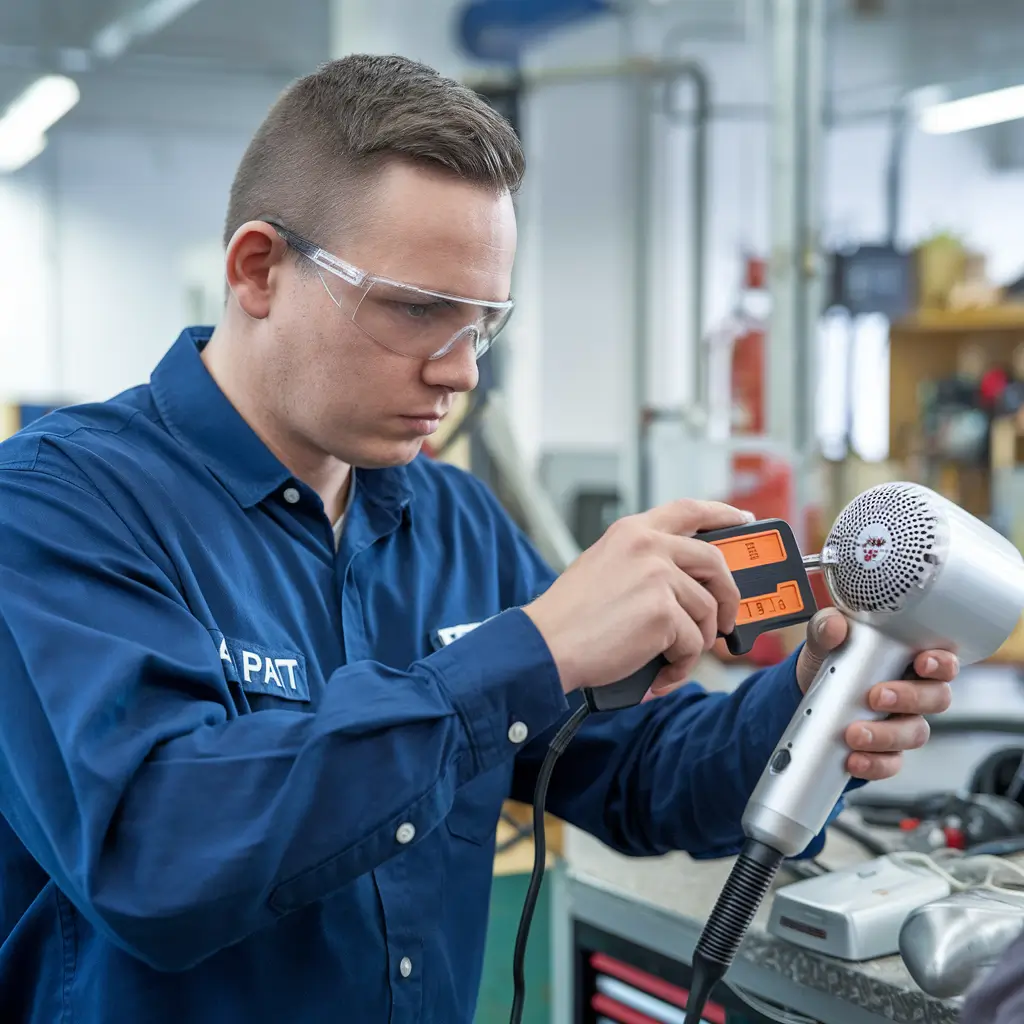Portable Appliance Testing or PAT is a method to check appliances to ensure that they are safe to use. It’s an important part of safety in many workplaces and properties and fulfil the compliance. It helps prevent electrical shocks, burns and even fires. In this blog, we’ll cover the basics of Portable Appliance Testing.
- Explain why it’s important.
- Who should handle it.
- How the process works.
- Whether you’re a business owner, landlord, or just someone curious about safety.

Portable Appliance Testing PAT is an inspection and testing process to ensure portable electrical appliances are safe to use. “Portable appliances” normally means anything that can be easily moved. and can be plugged into a power outlet, like a water kettle, hair dryer, iron, computer, toaster or power drill. However, PAT testing can also cover certain larger appliances, depending on the workstation or environment.
During a PAT test, a trained person or qualified Engineer examines the appliance for any signs of damage or wear. They also use a testing device to carry out electrical tests, such as checking for earth continuity (which helps prevent electric shocks) and insulation resistance (which stops electric current from going where it shouldn’t).
Why is Portable Appliance Testing PAT Important?
- Safety Compliance: For many businesses and landlords, PAT testing is necessary to meet health and safety regulations, protecting employees, tenants, or the general public.
- Fire and Accident Prevention: Faulty appliances can spark, overheat, and even cause fires. Regular testing spots these issues before they cause harm.
- Protection for Users: Whether it’s employees in a workplace or tenants in a rental property, regular PAT testing helps ensure that everyone using the appliances is protected from electric shocks and other hazards.
- Insurance Requirements: Many insurance policies require PAT testing as part of their safety standards, especially for businesses or properties open to the public. A missed test could even void insurance coverage if an electrical accident occurs.
- Cost Savings: Catching issues early on means you can repair or replace faulty appliances before they become bigger problems, which may save you money in the long run.
How Does Portable Appliance Testing PAT Work?
The PAT testing process usually involves these steps:
-
- Visual Inspection: The first step is a visual check of the appliance. The tester looks for signs of wear, like frayed cords, broken plugs, or burn marks, all of which could indicate potential danger. A large number of faults can be caught just by visually inspecting an appliance.
- Electrical Tests: If the appliance passes the visual inspection, it then undergoes electrical testing. This involves:
- Earth Continuity Test: Ensures the earth wire is correctly connected, which is critical for preventing electric shocks.
- Insulation Resistance Test: Checks if the insulation around the wires is intact, stopping any accidental flow of current.
- Polarity Test: Confirms that the live, neutral, and earth wires are all connected correctly in the plug.
- Labeling and Recording: Once the test is complete, appliances that pass are labeled with a “pass” sticker, often indicating the date of the test, next test due date, and the tester’s initials. Appliances that don’t pass are labeled “failed” and removed from use until repaired or replaced. The results are also recorded in a log for safety and insurance purposes.

What are the Benefits of Regular Portable Appliance Testing PAT ?
Regular PAT testing offers several benefits:
- Safer Workplaces and Rentals: By routinely testing appliances, you’re ensuring a safer environment, whether for workers, tenants, or customers.
- Compliance with Legal and Insurance Requirements: Following a PAT testing schedule helps satisfy health and safety laws and maintain insurance coverage.
- Improved Equipment Lifespan: By identifying faults early, you’re often able to repair or replace items before they fail completely, which can extend their life and reduce replacement costs.

Conclusion
PAT testing is a vital part of maintaining safe environments in workplaces, rental properties, and public spaces. By regularly testing portable appliances, employers, landlords, and facility managers can prevent accidents, protect people, and meet safety standards. While it’s not legally mandated in every situation, it’s highly recommended, especially in higher-risk settings.
With a clear understanding of what PAT testing is and why it’s important, businesses and property managers can help create safer spaces for everyone.







